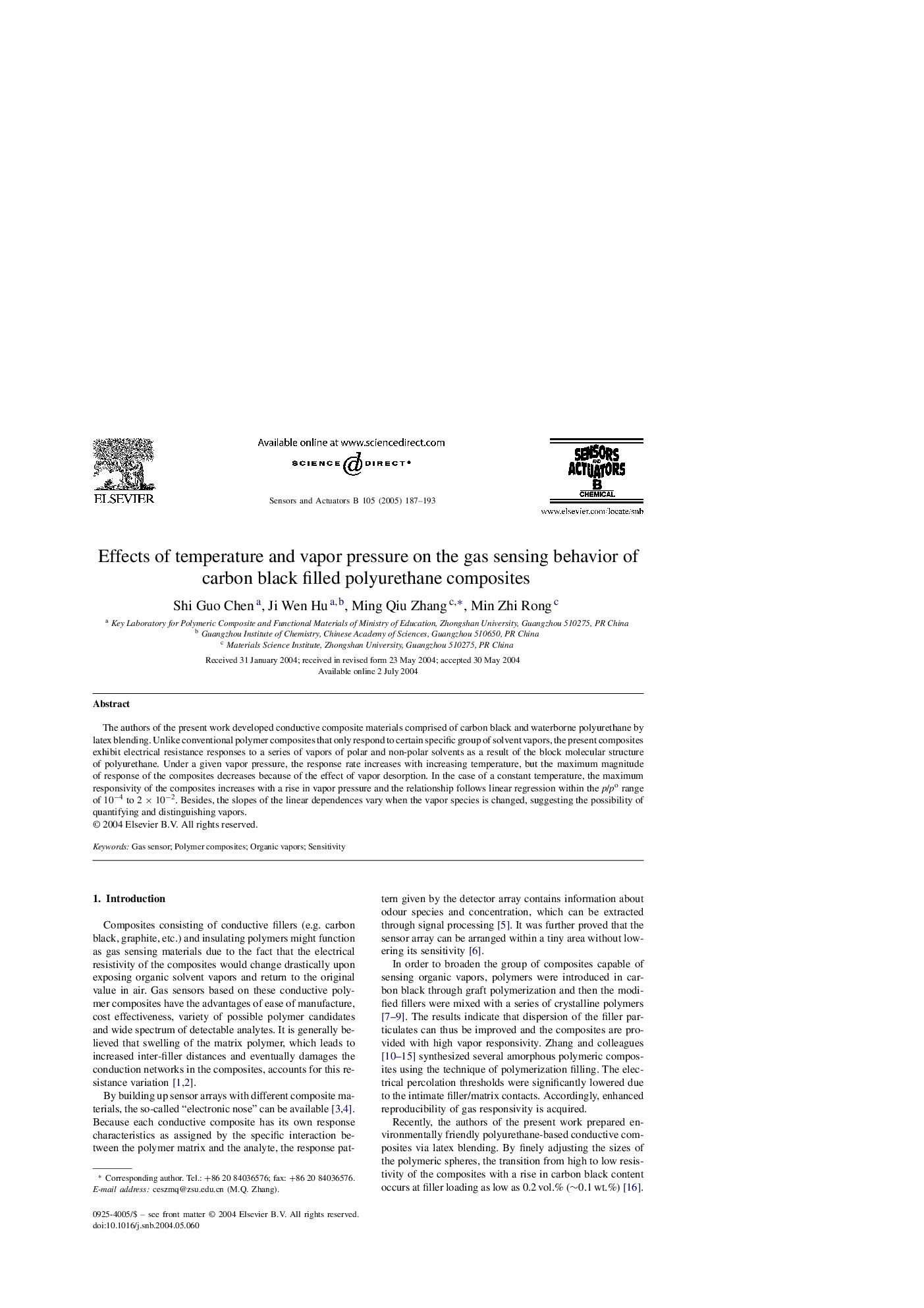| Article ID | Journal | Published Year | Pages | File Type |
|---|---|---|---|---|
| 10411033 | Sensors and Actuators B: Chemical | 2005 | 7 Pages |
Abstract
The authors of the present work developed conductive composite materials comprised of carbon black and waterborne polyurethane by latex blending. Unlike conventional polymer composites that only respond to certain specific group of solvent vapors, the present composites exhibit electrical resistance responses to a series of vapors of polar and non-polar solvents as a result of the block molecular structure of polyurethane. Under a given vapor pressure, the response rate increases with increasing temperature, but the maximum magnitude of response of the composites decreases because of the effect of vapor desorption. In the case of a constant temperature, the maximum responsivity of the composites increases with a rise in vapor pressure and the relationship follows linear regression within the p/po range of 10â4 to 2 Ã 10â2. Besides, the slopes of the linear dependences vary when the vapor species is changed, suggesting the possibility of quantifying and distinguishing vapors.
Related Topics
Physical Sciences and Engineering
Chemistry
Analytical Chemistry
Authors
Shi Guo Chen, Ji Wen Hu, Ming Qiu Zhang, Min Zhi Rong,
